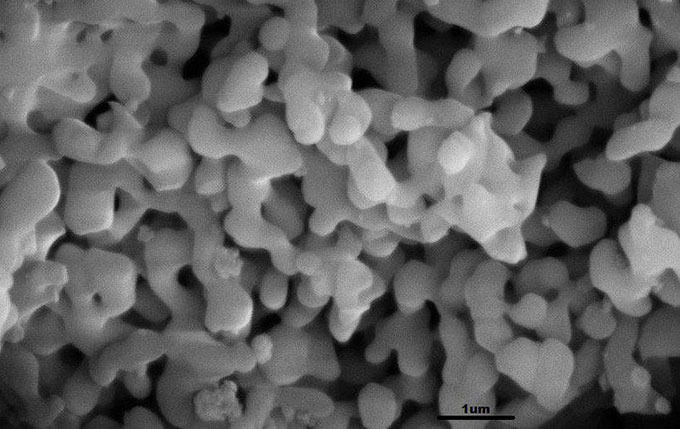Students find antibiotic adsorbent from medical wastewater
A study by students of the University of Natural Sciences found that antibiotic adsorbent in wastewater is nearly 98% and can be reused.
The new material was created based on the process of synthesizing and transforming the surface of nano aluminum oxide (Al 2 O 3 ) particles with polyanion poly styrenesulfonate (PSS) , the polymer used to remove ions, applied in engineering. and medical. The study was conducted by Nguyen Ngoc Trung, a student in the Department of Chemistry of the University of Natural Sciences, Vietnam National University, Hanoi and his colleagues, April 14, published in the Q1 Journal of Molecular Liquids .
The findings have important implications for improving hospital wastewater that contains many antibiotics, helping to balance the aquatic environment and limiting health effects.

Nanoparticles of aluminum oxide (AL 2 O 3 ) are synthesized and transformed. (Photo: Nano Material).
Using X-ray diffraction techniques and transmission electron microscopes, the team determined an aluminum oxide particle with an alpha structure of 40 nanometers, a surface area of 6.08m 2 / g. The conversion of the surface of aluminum oxide particles with PSS obtains new material, capable of adsorbing antibiotic treatment in medical wastewater. The adsorbed antibiotic is ciprofloxacin (CFX) , the antibiotic used to prevent the growth of bacteria in the course of disease.
Experimental results show that antibiotic adsorption capacity of the material reaches 97.8%, the removal efficiency in hospital wastewater samples actually reaches 75%. The effective difference, affecting antibiotic adsorption may be due to pH, exposure time, absorbed dose. In addition, this material can be reused with antibiotic removal efficiency in wastewater up to 96%.
Currently, the important parameters affecting the adsorption of antibiotics are being studied and optimized by the team.
- Wound material helps to heal quickly
- Synthesize material that can replace DNA
- Smart application that helps new students find safe accommodation
- Inauguration of a centralized wastewater treatment plant
- Medical technology for the next 15 years: X-ray breakthrough, antibiotic ... of the 20th century
- Unique 'technology' hospital wastewater treatment with reeds
- Find out what new antibiotics help overcome drug resistance
- Use leaves for scrub to clean medical waste
- £ 10 million for anyone to find a solution against antibiotic resistance
- 9th graders 'turn' air conditioner waste into drinking water
- 7 mistakes we often make when talking about antibiotics
- New materials absorb CO2 easily
- The CDC report states: The United States has entered a post-antibiotic period
- To know how horrible the antibiotic scenario is, go back to the past
 'Barefoot engineer' invents a pipeless pump
'Barefoot engineer' invents a pipeless pump Process of handling dead pigs due to disease
Process of handling dead pigs due to disease Radiometer
Radiometer Warp Engine: Technology brings us closer to the speed of light
Warp Engine: Technology brings us closer to the speed of light How will humans build on Mars?
How will humans build on Mars?  China and Russia develop extreme cold-resistant material that can maintain mechanical properties at -150°C
China and Russia develop extreme cold-resistant material that can maintain mechanical properties at -150°C  New form of gold with a thickness of one atom
New form of gold with a thickness of one atom  Successfully created an 'armor' layer that eliminated 96% of viruses
Successfully created an 'armor' layer that eliminated 96% of viruses  America creates materials that can think and feel
America creates materials that can think and feel  What was concrete and meat already? In the near future, wood can also be 3D printed
What was concrete and meat already? In the near future, wood can also be 3D printed 